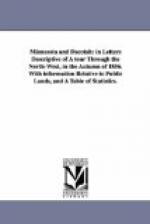In the statement of the case prepared in your office, it is averred that numerous precedents exist in the Land Office, not only of the allowance of town preemptions as the voluntary selection of individuals, but also of the application to such preemption claims of the ordinary construction of the word “occupation” habitually applied to agricultural preemption claims. That is to say, it has been the practice of the Government, not to consider municipal occupation “circumscribed by the forty-acre subdivisions actually built upon; * * but that such occupation was (sufficiently) evidenced, either by an actual survey, upon the ground, of said town into streets, alleys, and blocks, or the publication of a plat of the same evidencing the connection therewith of the public surveys, so as to give notice to others of the extent of the town site:” all this, within the extreme limits, of course, of the three hundred and twenty acres prescribed by the statute.
I think the practice of the Land Office in this respect, as thus reported, is lawful and proper: it being understood, of course, that thus the acts of alleged selection, possession, and occupation are performed in perfect good faith.
Something is hinted, in the report of the commissioner, as to the speculation-character of the proposed town settlement,— and, in the official brief accompanying your letter, as to the speculation-character of the proposed agricultural preemption. I suppose it must be so, if the land in question has peculiar aptitude for municipal uses. But how is that material? The object, in either mode of attaining it, is a lawful one. Two persons may lawfully preempt a certain quantity of land under the general law, and intend a townsite without saying so; or they may preempt avowedly for a town site. As between the two courses, both having the same ultimate destination, it would not seem that there could be any cause of objection to the more explicit one.
So much for the first branch of the second question. As to the second branch of it, the same line of reasoning leads to equally satisfactory results.
The municipal preemptor, like the agricultural preemptor, is required to take his land in conformity with “the legal subdivisions of the public lands.” I apprehend the import of the requirement is the same in both cases. Neither class of pre-emptors is to break the legal subdivisions as surveyed. The preemptor of either case may take fractional sections if he will, but he is in every case to run his extreme lines with the lines of the surveyed subdivisions. In fine, as it seems to me, there is nothing of the present case, in so far as appears by the questions presented, and the official reports and statement by which they are explained, except a convict of claim to two or three sectional subdivisions of land between different sets of preemptors, one set being avowed municipal preemptors, and the other professed agricultural




